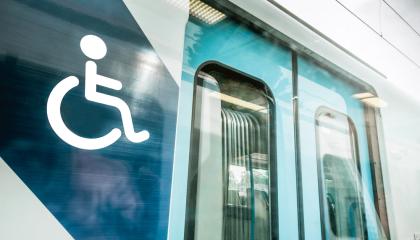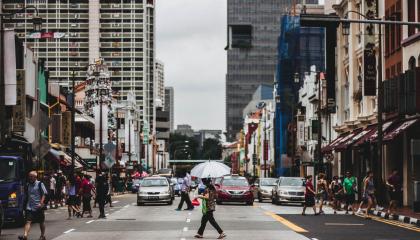Railway accessibility refers to the ease with which people can use the railway system, particularly those with disabilities or mobility issues. Ensuring that railways are accessible and approachable allows people with disabilities to travel independently and feel welcomed in society. Accessibility makes public transport more convenient for everyone, and it can improve public health by promoting active modes of transport such as walking and strolling.
Traveling by plane as a wheelchair user can be tricky when navigating security, boarding your flight, layovers, and everything else that comes with getting on an airplane. And, not many resources exist to guide wheelchair users on ways to plan for the experience and avoid any challenges. Here are four tips to make traveling by plane with a wheelchair easier!
Traveling with a disability comes with unique opportunities and challenges, often requiring more research to find the best disability travel tips. No one should have to stay home due to a permanent or temporary condition. In fact, accessible travel is on the rise.
The travel industry offers more services and accommodations than ever before to individuals with impairments. With the internet on hand, individuals with disabilities often travel and share their own tips for getting around and exploring the world.
Creating a bike lane city infrastructure requires the coordination of the appropriate government agencies, resources, and construction logistics. It’s a time-intensive ordeal; however, the benefits are many for cities that are suffering from intense air pollution, overcrowding, and congestion. Bike lanes alter the city infrastructure and also improve the health of inhabitants.
Portland State University noted that when five major US cities incorporated protected bike lanes into their city infrastructure, bike ridership increased 170 percent.
While cities get a bad rap for the strain that they place on the environment, it’s cities that are the solution to climate change. Historically, cities are hubs for trade, culture, innovation, and commerce. But when it comes to climate change, cities not only contribute the most to the negative effects of global warming, but they also deal with the day-to-day effects, including extreme heat, sunny day flooding, and more.
For the urban landscape, sidewalks have become a type of no man’s land for city commuters — not only for pedestrians but also for cyclists. Since vehicles rule the road, pedestrians and cyclists are at-risk anytime they walk or ride in the road. To remain safe, city cyclists and pedestrians often turn to the sidewalk.
While many cities want their residents and commuters to move away from using cars and encourage bicycling, pedestrians in some cases see this shift as dangerous.
For the urban setting, bike lanes can offer many benefits to the community. More and more cities are seeking ways to cut down on congestion while also improving the environment, and these cities are turning to the bicycle. However, the addition of e-bikes and shared bicycles is creating its own number of problems.
Since 1990, pedestrian fatalities have increased, and for pedestrians with disabilities, the risk is even higher. From 2007 to 2017, pedestrian deaths increased by 35%. When researchers studied the cities with the highest fatalities, they came across sidewalks in disrepair, lacking curb ramps, and poorly designed crosswalks.
While we have more work to be done to set up a protective infrastructure for pedestrians, there are a few simple driving techniques that will keep others safe.
While the Americans with Disabilities Act (ADA) outlines a set of standards for accommodating the needs of individuals with disabilities, ADA compliance is something that benefits everyone. When our businesses, neighborhoods, and local government agencies work to be considerate of individuals with differing needs, our inclusive community provides the space to recognize the unique gifts and perspectives that these individuals can offer.
To create an accessible world and to comply with ADA standards, accessible pedestrian signal (APS) models work with detectable warning tiles to keep pedestrians of all abilities safe around vehicle intersections and street crosswalks. These APS models mark heavily trafficked areas in cities with a button for audio directions for individuals with low visibility. A number of APS tools offer direction and aid to individuals with differing abilities, including a rapid tick sound, speech indication, tactile signals, and vibrating indications.
Pagination
- Page 1
- Next page
Connect with us
We pride ourselves on our customer service, and we'd love to hear from you! Sign up for our newsletter to keep up with industry updates and trends, as well as any new product releases.












